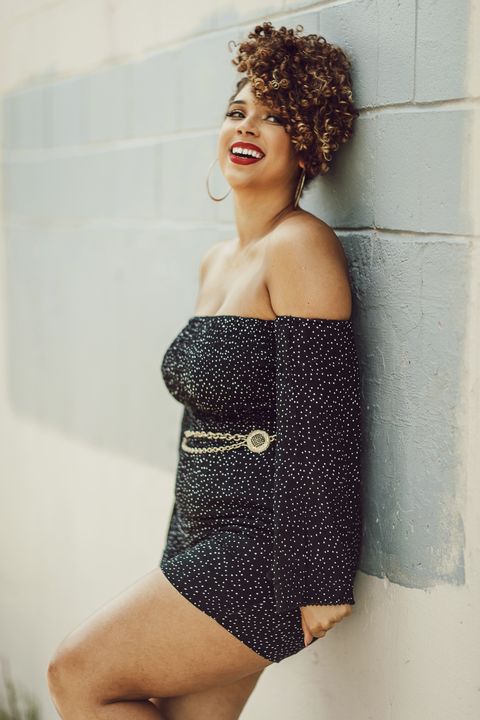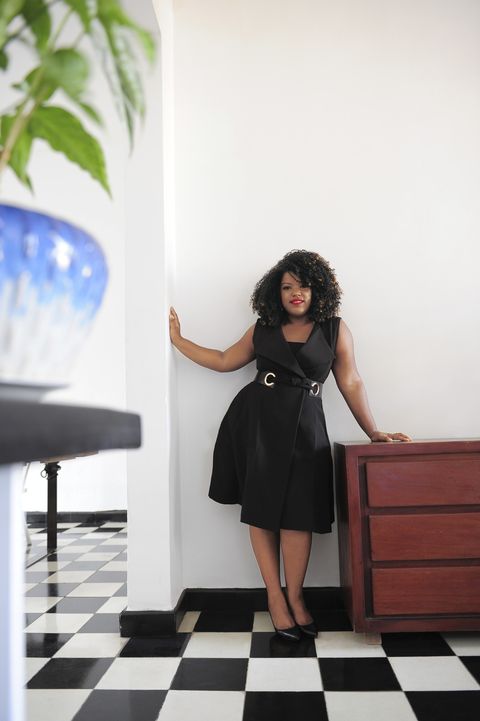I had just started my second trimester when I shared a pregnancy factoid with my mother. “Mami, the babies are growing hair this week,” I said into the phone.
“Ay, Dios mio!” she responded. “Let’s pray that they don’t have pelo malo.”
I wish I could say she was kidding. Or that I reprimanded her. Instead, I laughed it off, even though I knew better than to acquiesce to the “bad hair” stigma. I was carrying a boy and a girl, and while their health was top priority, I can’t lie—I was hoping that at least one, ideally the girl, would be spared pelo malo. I had had enough of it to last me a lifetime.
Pelo malo: Its literal translation is “bad hair.” The term, embedded in black and Latinx culture, is directed at curly, textured, and kinky hair. In two words, it sums up the belief that this hair type is so undesirable, so malo, that it has to be corrected. Pelo malo has been tossed around for so long, we’re essentially immune to its negativity. And when your loved ones are the people saying it, there must be something to it, right?
“From birth, Latina and black women are taught that the closer you are to white, the easier it is to succeed in life,” says author and beauty expert Tia Williams, who has written extensively about beauty standards. “The lighter, the better. The straighter, the better. Both cultures are working to heal and get to a place of loving what we’ve got.”
It’s a challenge. I came of age in the 1980s, an era that certainly didn’t put chubby, frizzy-haired Latinas like me on a pedestal. Every TV ad, magazine shoot, and billboard in my very Latin New York City neighborhood celebrated long, straight, shiny, bouncy, and well-behaved hair. All of Mami’s favorite telenovela actresses had this hair type, and later, so did my own beauty idols, like Jennifer Lopez. (Whether they came by their pelo bueno via a blow-dryer and straightening treatments was another story.)
Hairwise, I was my Dominican family’s problem child. Every Saturday, I submitted to an hours-long grooming process: Shampoo and condition my hair, set it in rollers, sit under the hooded dryer for an hour, and, finally, unravel each piece of hair, only to smooth it further by quickly wrapping up each section around my head and setting it with bobby pins. The sun would have set by the time I could flaunt my new pelo bueno, and excitement would give way to anxiety. Let’s hope for zero humidity this week!, I would think. And no sweaty dance parties, please!
Eventually, I learned how to blow-dry my hair,and discovering the flatiron was one of the happiest moments of my life. I dabbled with wearing my hair in its natural state, but I always reverted back. Who could blame me? Curly product offerings were slim, and You-Tube tutorials were a thing of the future. I also didn’t recognize the curl-framed face in the mirror. Go fix your hair, I’d think.
“We’re not taught to take care of our hair,” says Ona Diaz-Santin,owner of the 5 Salon & Spa in Fort Lee, New Jersey, which specializes in curly hair. “Instead of learning to keep our hair healthy by trimming it every six weeks and using moisturizing treatments, we were taught to manage it.” As a little girl, Diaz-Santin, who is Dominican American and grew up in her mother’s salons, would overhear stylists pointing out clients with pelo malo—and promptly recommend chemical relaxers. Today, she encourages clients to embrace this hair type instead. “We don’t kill the integrity of the hair,” she says.“Damaged hair is the real pelo malo.”
Lately, a buzz of Latinas rewriting the pelo malo narrative is turning into a roar, particularly online. Some do so in cheeky ways, like Haus of Curls founder, stylist and influencer Sherly Tavarez, with her popular “Pelo Malo Where?” merchandise.
This spring, New York City–based influencer Ada Rojas launched Botánika Beauty, a hair-care line inspired by what she learned on her publicly shared journey to wear her hair natural. The name, she says, is a riff on botanicas, the neighborhood apothecaries so beloved by Latinas.
“There’s a whole community of empowered natural Latinas,” says Los Angeles–based Julissa Prado, founder of the Rizos Curls product line. “This is about the girl who isn’t afraid to represent her culture. She’s unapologetic.” Prado’s proud slogan, #RizosReinas, calls women queens—and their hair, their crowns.
One of the boldest exemplars of this movement is Carolina Contreras, owner of Miss Rizos Salon in Santo Domingo, Dominican Republic, a country notorious for its silky-straight “Dominican blowout.” The longtime activist and blogger reclaimed the conversation by opening a salon–cum–community center that caters to natural hair. “How can hair be bad?” she asks.“Has hair robbed a bank? No? Then let’s stop using that term.”
It’s gaining momentum. From models walking the runway with natural texture to influencers whose curls, coils, and kinks have made them famous, it’s a good time to redefine our hair language. I couldn’t be happier about it. I might not yet be curl-fluent—old habits die hard—but pelo malo slights have never been uttered by me. My twins are 18 years old now, beautiful and healthy and the lights of my life. And their hair? Neither good nor bad. Just...hair.







Comments
Post a Comment